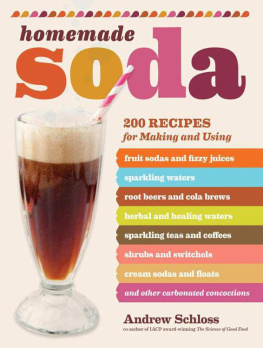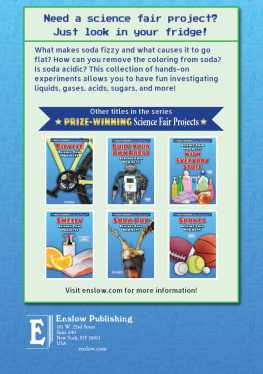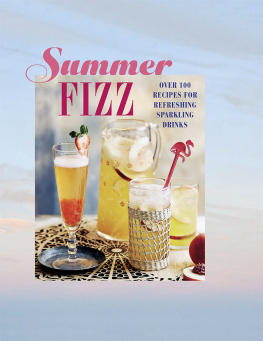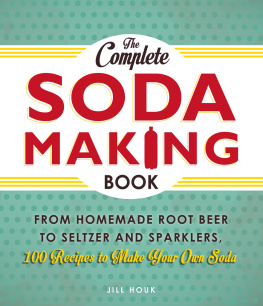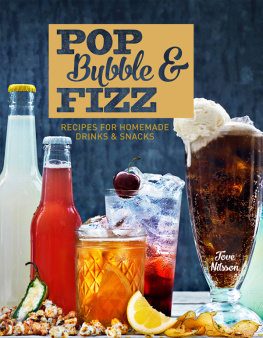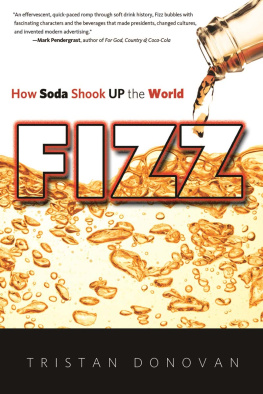homemade soda

homemade soda
Andrew Schloss

The mission of Storey Publishing is to serve our customers by
publishing practical information that encourages
personal independence in harmony with the environment.
Edited by Margaret Sutherland and Shauna Toh
Art direction and book design by Alethea Morrison
Text production by Jennifer Jepson Smith
Photography by Aran Goyoaga, except for George Marks/Getty Images, page 3
Photo styling by Aran Goyoaga
Illustrations by Alison Kolesar
Indexed by Christine R. Lindemer, Boston Road Communications
2011 by Andrew Schloss
All rights reserved. No part of this book may be reproduced without written permission from
the publisher, except by a reviewer who may quote brief passages or reproduce illustrations in a
review with appropriate credits; nor may any part of this book be reproduced, stored in a retrieval
system, or transmitted in any form or by any means electronic, mechanical, photocopying,
recording, or other without written permission from the publisher.
The information in this book is true and complete to the best of our knowledge. All recommendations
are made without guarantee on the part of the author or Storey Publishing. The
author and publisher disclaim any liability in connection with the use of this information.
Storey books are available for special premium and promotional uses and for customized editions.
For further information, please call 1-800-793-9396.
Storey Publishing
210 MASS MoCA Way
North Adams, MA 01247
www.storey.com
Printed in China by Toppan Leefung Printing Ltd.
10 9 8 7 6 5 4 3 2 1
Library of Congress Cataloging-in-Publication Data
Schloss, Andrew, 1951
Homemade soda / by Andrew Schloss.
p. cm.
Includes index.
ISBN 978-1-60342-796-8 (pbk. : alk. paper)
1. Carbonated beverages. 2. Cookbooks. I. Title.
TP630.S35 2011
641.875dc22
2010051171
contents
INTRODUCTION
Sweet, Cold & Bubbling
PART 1
Getting Started
PART 2
Recipes for Soda Drinks
PART 3
Recipes for Soda Food
acknowledgments
Building a book is a huge project and though authors get most of the credit, it would be delusional to think that the name on the cover is solely responsible.
Two years ago my agent, Lisa Ekus, called to ask if I would be interested in writing a book on homemade sodas. Hesitant at first (the subject originally seemed esoteric to me), I began researching fermentation (amazing subject), bottling (in my kitchen?), and the history of fizz. The seduction didnt take long and, working with Margaret Sutherland, Storeys cookbook acquisitions editor, we quickly began to grasp exactly what a comprehensive, user-friendly book on an esoteric subject might look like. Then the real work began a year of experimenting, concocting, writing, tasting, and cleaning up exploded soda bottles.
Since then I have tasted terrible swills and beautiful, subtle herbal blends. I learned how to nurse a speck of yeast into a bottle of silky bubbles and I was exposed to a score of new ingredients and flavors. But when the hubbub subsided and the pages were all filled I wondered, as I often do, Do I really have a book here? Fortunately for me, Storey hired a brilliant, hardworking and easy-to-work-with project editor, Shauna Toh, who along with Nancy Ringer, the copy editor, helped organize the jumble I sent them into something that reads very much like a comprehensive text.
Meanwhile Alethea Morrison, the creative director at Storey, was taking the same manuscript and transforming it into beautiful pages. It wasnt until I saw her work that I knew we had something. What a wonderful surprise the day the first pages arrived!
Lastly an acknowledgment of sacrifice: while writing this book our kitchen was transformed into a carbonation laboratory, as bottle sanitizing took precedence over counter space, so I give an apology to my wife, Karen Shain Schloss, for taking over her life with countless concoctions that burp, fizz, and go pop in the night.
to my dad,
a real soda jerk
Introduction
SWEET, COLD & BUBBLING
Next to oxygen, we need nothing more than we need drink. Plain water is the perfect thirst quencher, yet we have been seeking ways to improve its palatability since the first human took her first sip. Thirst must be fulfilled to sustain life, but once we have satisfied our essential needs, our sensual desire for flavor, color, and invigoration takes over, spurring us to transform plain water into more elaborate beverages whenever we get the chance.
Soda pops are incredibly diverse, but three threads connect all of them: they are all sweet, they are all consumed cold, and they are all carbonated. And now we live in a culture where thirst-quenching has become big business. Sodas, beers, juices, coffees, teas, flavored waters, energy drinks, and sports beverages compete for our potable dollars. But you can stir up homemade sodas that match any of them with better nutrition, with less sugar, and for a fraction of the cost. It can be as simple as mixing a flavorful base into still or sparkling water in your own kitchen.
Sips from the Past
We have no record of the very first human-enhanced beverages, but they were most likely herbal teas or other infusions brewed for medicinal effect, such as the tea North American natives boiled from the roots of sarsaparilla to take as a cough remedy. Historically, people have tended to prefer their beverages hot or cold rather than tepid, a preference that we must presume lies deep in the collective unconscious. Fresh water is naturally susceptible to microbial infestation, and lukewarm water is a natural breeding ground for bacteria, viruses, and parasites. Humans must have learned early on that boiling water made it safe to drink, but what about cold drinks? Chilling does not make contaminated water safer to drink, but naturally cold flowing water is far less likely to contain a harmful amount of contaminants than lukewarm standing water, which is probably why cold running water, particularly bubbling icy cold water, suggests the very essence of purity and refreshment.
The most primal source of bubbly drinks would have been naturally carbonated waters from underground mineral springs. Ancient civilizations believed that bathing in these geologically effervescent waters had healthful and medicinal value, and over the centuries, taking the cure at mineral spring baths became a standard health regimen. Starting in the late 1700s, drinking naturally sparkling mineral water was prescribed for its therapeutic benefit, and by 1810, a method for mass producing soda water made by mixing still water with sodium bicarbonate and acid to create carbon dioxide bubbles, in imitation of naturally sparkling mineral water had been given a U.S. patent. Soda fountains producing flavored carbonated waters became commonplace in pharmacies during the nineteenth century, dispensing bubbling remedies for the cure of headaches, hangovers, and nervous afflictions.
However, since geologically carbonated water is relatively rare and the mechanical soda carbonation process came on the scene late in the game, early imbibers experienced effervescence most often as a by-product of fermentation. Fermentation occurs naturally when wild yeasts (microorganisms floating freely in the air) find a source of sugar on which to feed. Given enough food and water, yeasts digest sugar and produce alcohol and carbon dioxide, resulting in a sparkling beverage.
Next page
